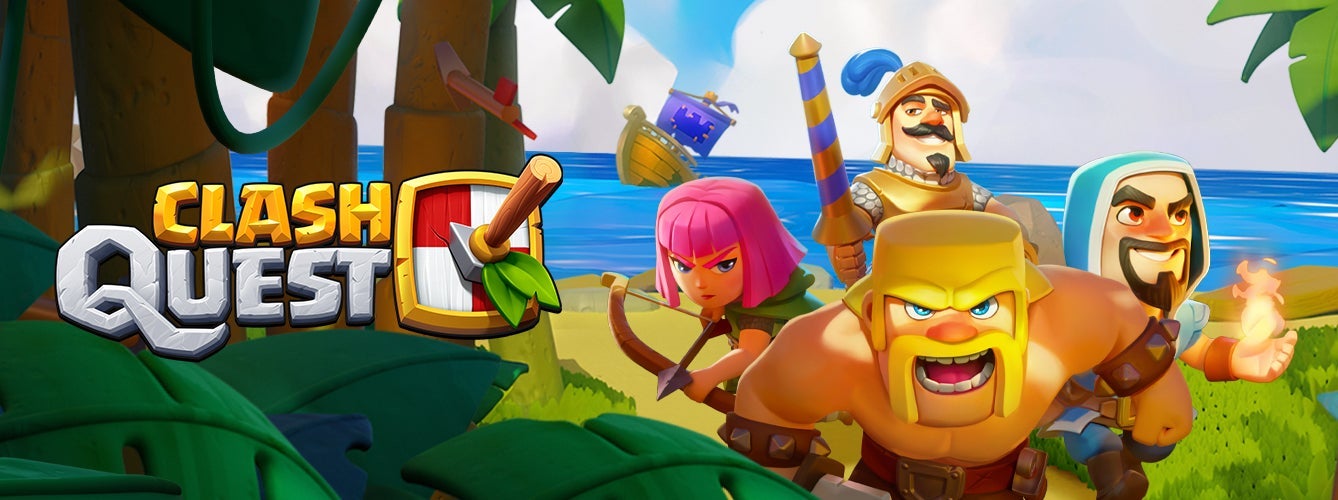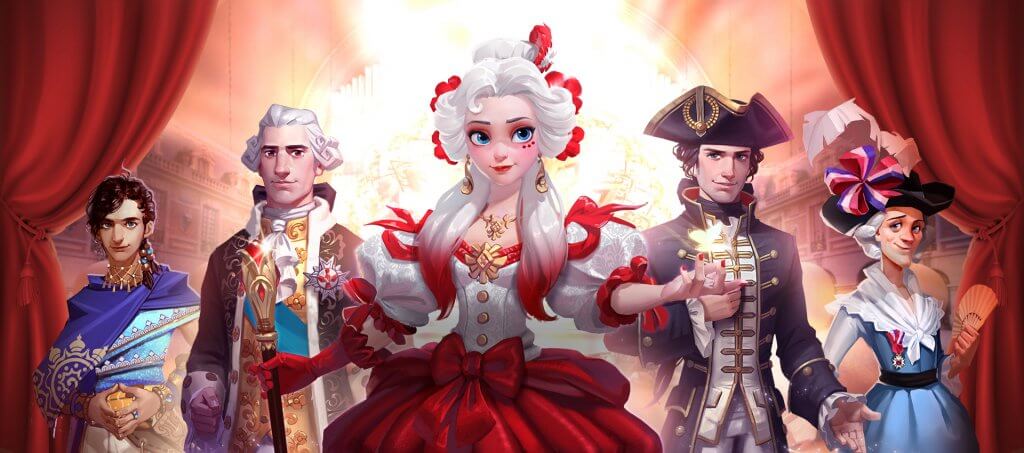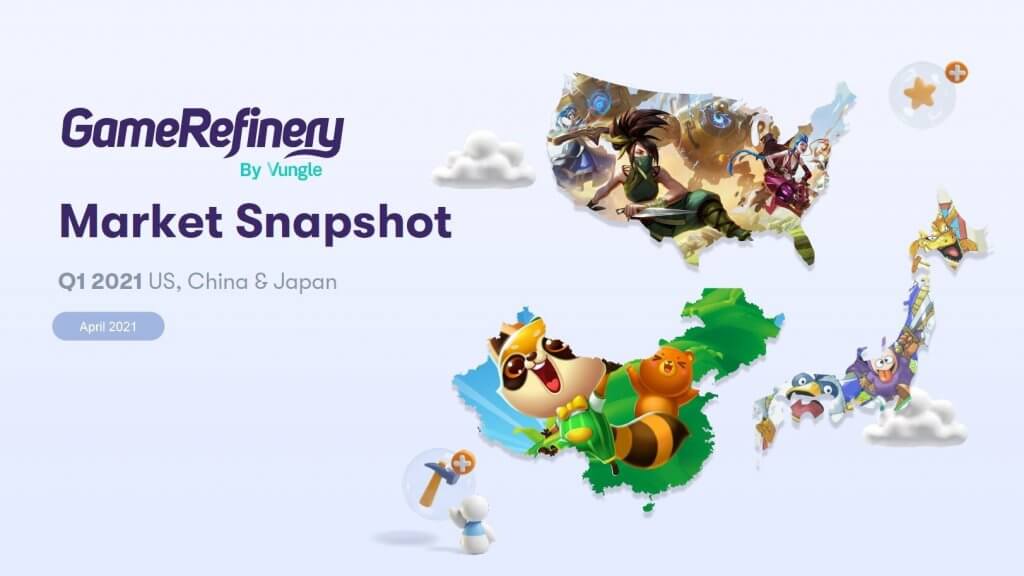Early April 2021 saw the announcement of 3 new Clash universe games being developed by Supercell: Clash Quest, Clash Mini, and Clash Heroes. The latter two, auto-chess game Clash Mini and Action RPG Clash Heroes, are still being worked on and have not been even soft-launched yet. However, the third one, Puzzle RPG Clash Quest, was soft-launched to Nordic countries on April 6th. So let’s take a closer look at Clash Quest!
The game has also been analyzed to the GameRefinery service for our customers who want to analyze the data further.
Puzzle RPGs – The competition in general
To understand better where Clash Quest fits in the field of mobile games, let’s first take a look at its subgenre in general.
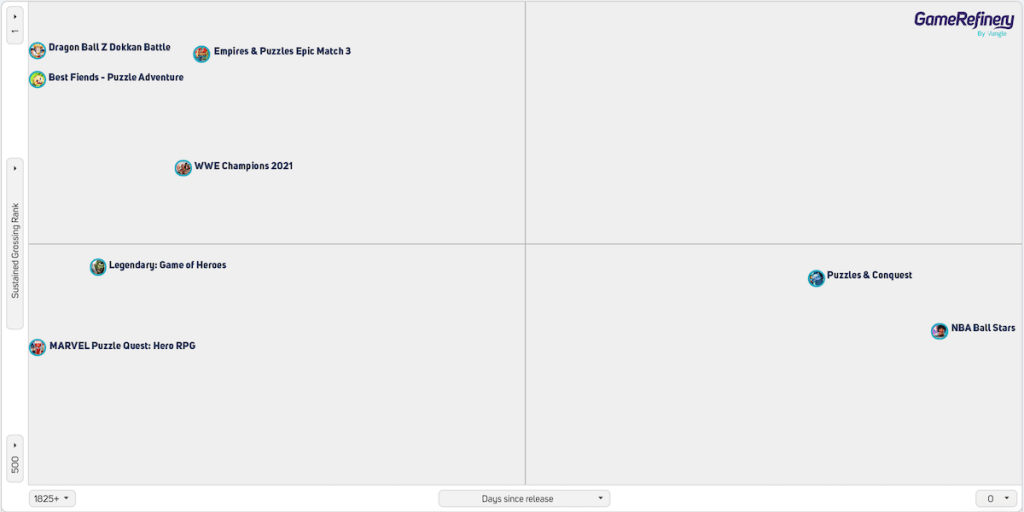
Top Grossing 200 hasn’t had in years a new Puzzle RPG that could sustain its rank. Old masters like Dragonball Z Dokkan Battle, Empires & Puzzles, and Best Fiends are the genre definers. Newer additions like Puzzles & Conquest, Puzzle Combat, and NBA Ball Stars have not yet really shaken the Top 200. However, Puzzles & Survival, the recent hybrid 4X strategy game with Puzzle RPG mechanics, has found its place in the Top 50’s and proves that Puzzle RPG mechanics are still enjoyed by many.
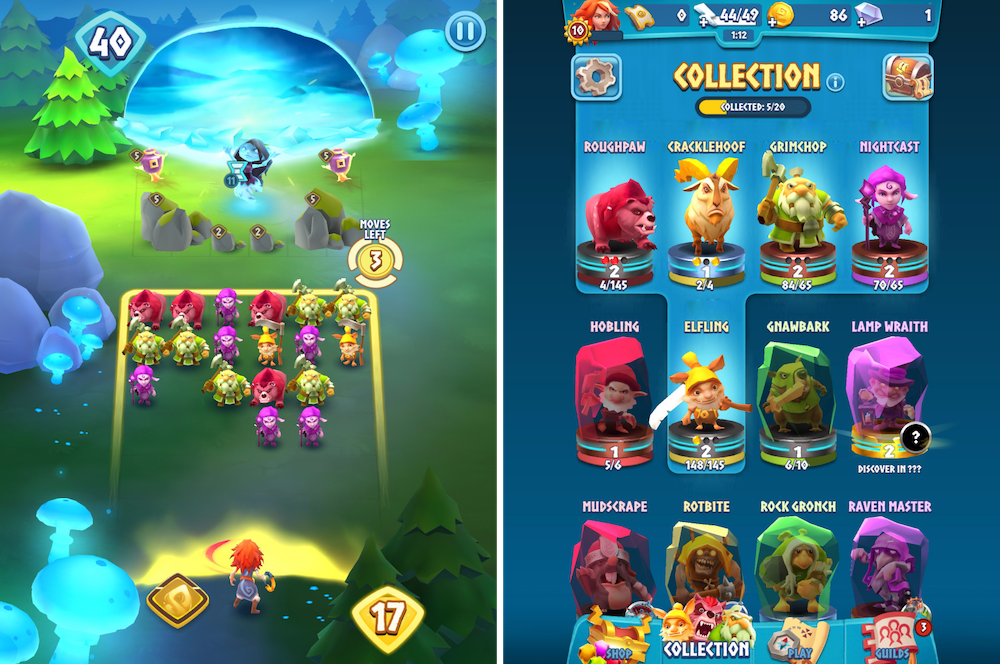
When it comes to Clash Quest, the most similar game that comes to mind is Legend of Solgard. The characters are puzzle pieces that must be combined with the same kinds of characters in order for them to perform their attacks. Different characters have different roles, like Attacker specialized in dealing damage, Defender being expert in mitigating incoming damage and Supporter healing the team and giving them buffs. Characters are unlocked through various gacha boxes.
But let’s now move on to Clash Quest and see how it is built.
Clash Quest’s core gameplay
In the battles, the screen is divided into an equally sized enemy and ally sides. The player has a full grid of characters to use with the number of reinforcements listed below. Once the player runs out of characters to use, they lose. Before that happens, they must clear 1 to 3 phases of enemy formations depending on the stage. The limit on moves the player can do is rarely done this way but is interesting and works quite well.
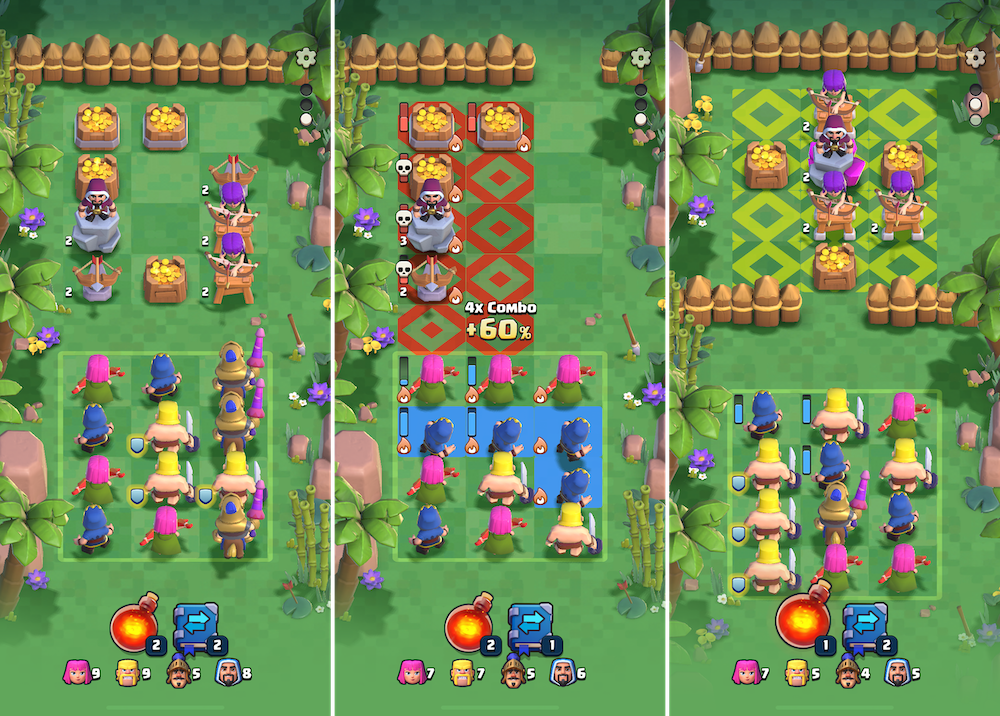
Attacking is done simply by tapping a character. If the character is adjacent to another one of its kind, the whole connected group will attack together with an ever-increasing combo power boost.
Each character type has its own unique logic to attacking. Barbarians are simple creatures that just strike the closest target. Wizards prefer the closest targets as well, but they deal AoE damage to the surrounding enemies on the side. Prince deals massive damage but only runs straight forward.
There are several spells that can be used to influence the outcome of the battles. The spells can only be used a couple of times per battle, but the impact can be great. Offensive spells like Fireball and Rocket deal damage to the enemies and can be used to snipe tricky hard-hitting enemies off early on. Spells like Swap, Charge, and Retreat can be used to alter the formation of your own characters to utilize their full power better.
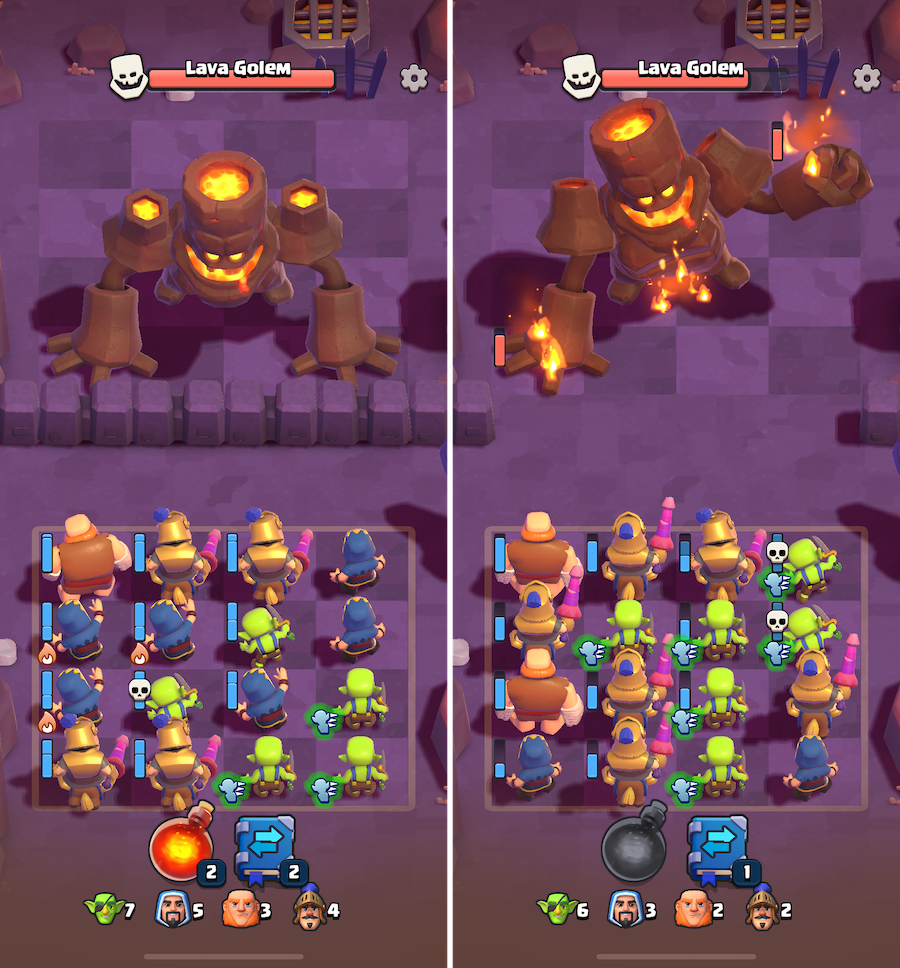
What would an RPG be without Boss battles? The Boss battles in Clash Quest are somewhat scarce but all the more enjoyable challenges to wrap up an area. As an example, Goblin King moves around on his side of the battlefield, making life harder for Prince to hit him. Lava Golem makes life trickier by having its hands on the ground, attracting attacks from the characters, so they don’t cause damage to the main body. Occasionally one hand is lifted in preparation for a stronger attack, and that is the time to hit the main body with as strong of a combo as the player can prepare.
The collectables: characters, spells, and equipment
At the launch, the game features 9 characters, 8 spells, and 3 equipment items per character (27 in total). All of these are obtained by playing through the main progression. Characters and Spells are locked at the specific points of the progress while all the equipment is obtained randomly from boxes when clearing levels. Unlocking characters through stage progression is a peculiar move considering how the monetization of practically all successful Puzzle RPGs is focused on character collecting. It is a nice way to reward players for clearing levels, but while playing the game, it felt like Clash Quest could really benefit from a more Brawl Stars or Clash Royale style of approach as gachas simply tend to be the way to go with character collection games. In the US, 56% of Puzzle RPG games have 5 or more gachas, and in the Top 20% of Puzzle RPGs, the number is even higher, 75%. Maybe the team is trying to create something new without gachas since several countries are looking to adjust their gambling laws regarding loot boxes. They might also introduce the gachas later as the soft launch goes on.
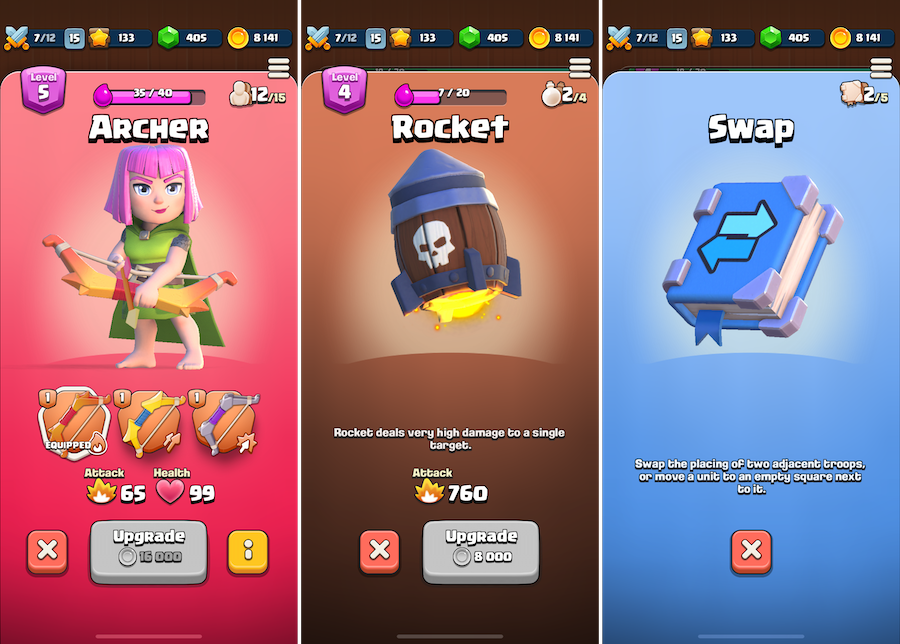
Clearing a battle awards player with elixir (exp) to some random character. Once enough elixir is accumulated, the player can use coins to upgrade the character’s level. This increases the two attributes of the character, Attack, and Health. The third stat influencing character’s performance in battles is the character count, which adds a character to the reserve for battles. Players can randomly obtain +1 to a character count from boxes when clearing levels.
The character upgrade system feels very simplified and basic. It works for early gameplay while learning the basics and probably serves the casual audience well. However, the game could benefit from a more diversified upgrading system that would give the gratification and boost that comes from upgrades more often. It would help smooth out the huge difficulty spikes that the game in its early soft launch days suffers from. Having a more complex level-up system is also a smart move based on data since the Overall Popularity for 3 or more level-up types in Puzzle RPGs in the US is 33%, but for the highest-grossing titles of them (Top 20%), the popularity is 75%.
Spells are more simple variations from characters. The offensive spells can be upgraded with a similar elixir + coins combination. This increases the Attack power of the spell. The usage count can also be raised in a similar way as the characters. The spells that affect the player’s side of the battlefield can only raise the usage count.
Equipment items give variation to the usage of characters. For example, the Equips of Prince are Twofold Lance, Power Lance, and Shield Lance. On a basic level, Twofold Lance deals 50% damage to the target behind an enemy destroyed by Prince, Power Lance damages adjacent squares with 15%, and Shield Lance blocks 50% of the incoming damage. Only one weapon effect can be active at once per character. Equipment items level up when duplicates are obtained from boxes after battles. The Equipment items add a small strategy element to the battle preparation, and they can really turn the tide of a battle.
Equipment items are really the only strategy element in the game outside battles as the game decides which characters and spells you use in which stage. This results in players having to upgrade their whole collection of characters and spells in order to progress. Players have very little choice in how to play, and it results in it being easy to make the failure of clearing the stage the fault of the game design instead of something they could have done better in planning.
Clash Quest’s game modes
At the time of writing, the game features two modes, Quest and League. Both modes have their own Stamina Tokens. Quest Stamina refills 1 Stamina per 1 hour, and League has 1 free attempt per day.
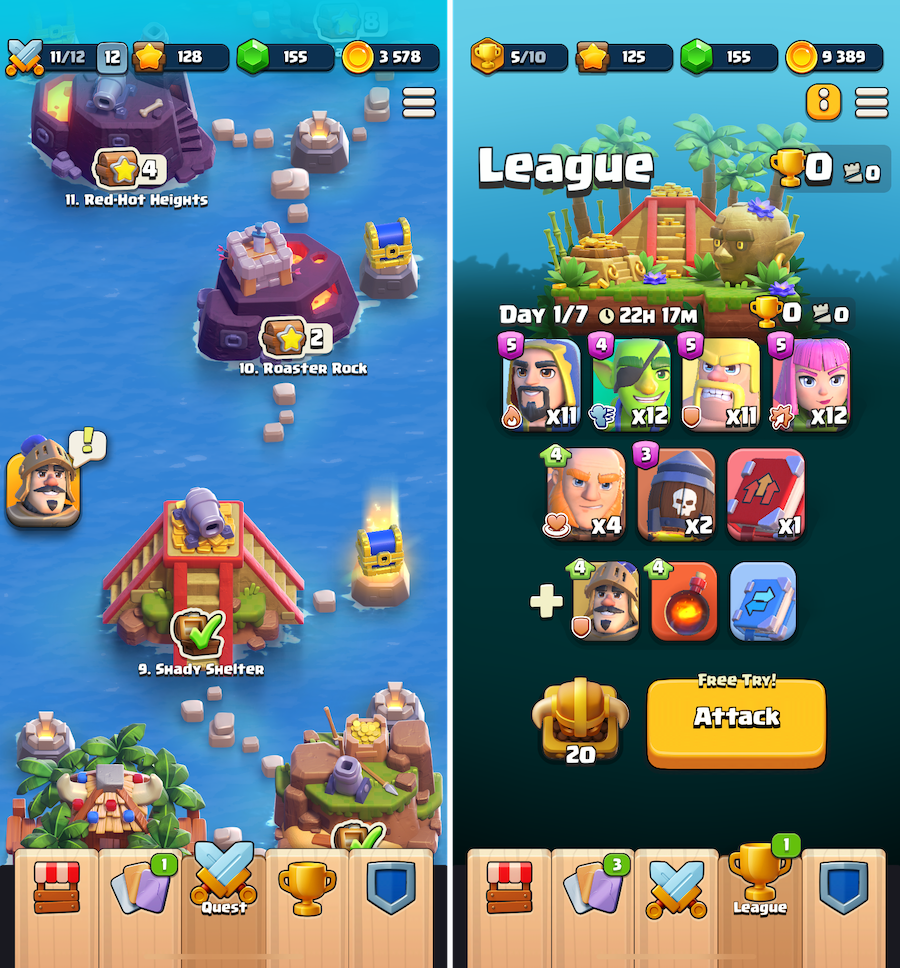
Quest is the linear main progression. The player moves on from island to island, facing increasingly tough enemy formations. There are 36 different islands, with each of them having 3 to 5 battles to clear. Islands have a Star requirement, so even though only 1 star might be required to move on with stages within an island, the player must perform well to move to a new island. New characters are unlocked occasionally when clearing specific islands. Getting max Stars on all levels within an island rewards players with chests that contain character exp, money, and occasional Equipment items or character count increases.
Occasionally a random event indicator can pop up on the main progression map showing a coin cart or a bomb barrel. A level that has that indicator has new elements in the stage and destroying them all results in a larger than usual coin and elixir drop, which helps strengthen the team.
These random events really help the player in leveling up their characters as the resource drops are significantly better than those from grinding old stages in general. In the early soft launch days, these events become the main reason for opening the game when a player is stuck in the Quest progression.
The second play mode, League, unlocks after the player has cleared enough stages. It features an endless PvE challenge each day where players must use the given characters and spells to survive as long as possible. The scores are added together for a week, and a group of 30 players have their scores compared. Top 5 move on to higher Tier while ranks 21 – 30 move down a Tier. Tiers are Bronze 1-16, Silver 1-3, Gold 1-3, Platinum 1-3, and Legendary 1-3. A nice amount of coins and elixir are awarded at the end of the week.
So overall, the choices in how you want to play the game are very limited. There are two modes out of which one you play most likely just once a day, so it doesn’t really add that much diversity. In both modes, the team you use is determined by the stage you are playing, so the player doesn’t really make strategic decisions (except on what Equipment to use) outside the core battles. All of this combined can result in a hard stop in progress unless you pay to level up your characters. After a while, all you can do is repeat the same stages over and over again for small drops or not play the game and wait for a new random event to show up.
Monetization in Clash Quest
The game features a modest shop with a selection of items that refreshes every 12 hours. The store can contain Elixir (experience) for the characters, boosts to character counts, and Equipment items. Usually, the selection contains one to three free gifts the player can pick up. The emptied slots are then filled with paid items.
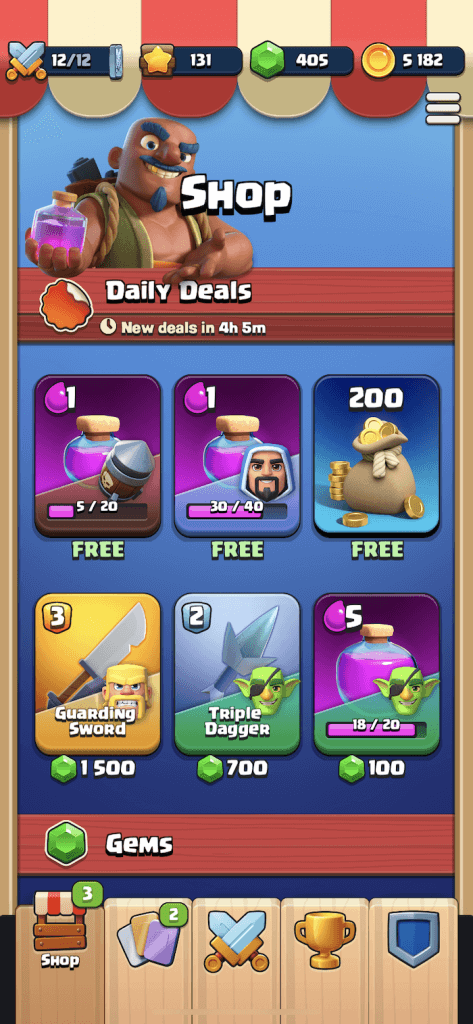
Quest Tokens (Stamina) can also be bought from the store.
That is everything there really is to buy. The focus seems to currently be on finding out how the core gameplay is received and how it could be improved.
One interesting thing to note is how the premium currency can only be obtained very rarely through shop freebies, so if you want anything that costs gems, you have to pay for it. Not giving out premium currency is somewhat rare on the market (only 6% of Puzzle RPGs in the US don’t give out premium currency), but it makes sense here since there is not really much to spend on.
The conclusion
All in all, the game is a very stripped-down version that seems to be testing the waters with the core mechanics. The battles themselves are quite fun and require solid strategic thinking. The system is easy to get a basic grasp on, but mastering it can be hard, as is the case with Puzzle RPGs due to random elements. In its early stage, the game is quite linear and doesn’t really give players much say in how they want to play it, which could limit its lifetime. It will be interesting to see what kind of adjustments Supercell makes to the game as time goes on. In its current stage, the game is sadly somewhat easy to forget, but maybe through soft launch, the team can find ways to make the game become one of the memorable games people will play for years.
If you enjoyed reading this post, you should check out the rest of our game deconstruction blog posts.

